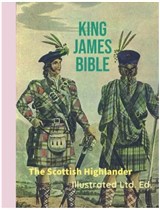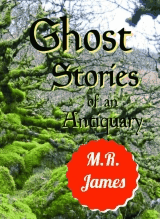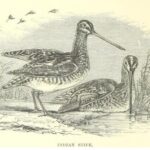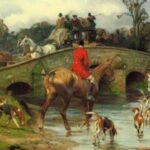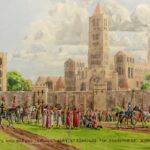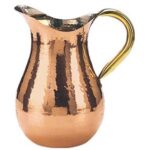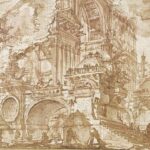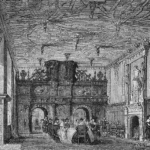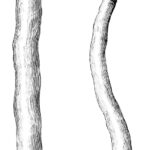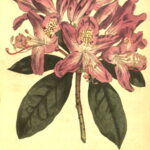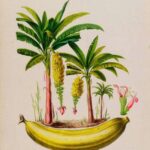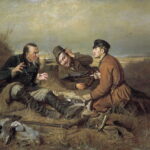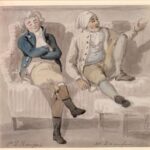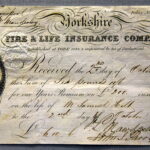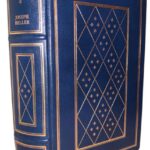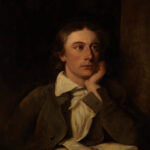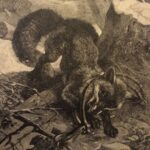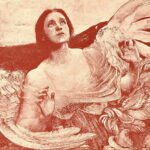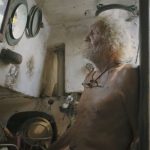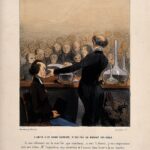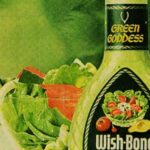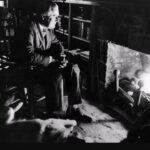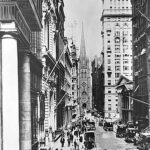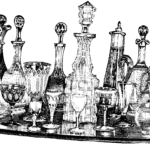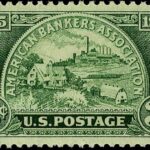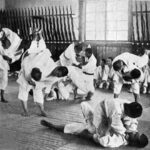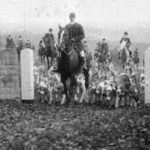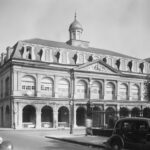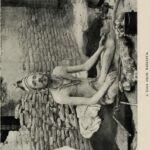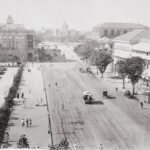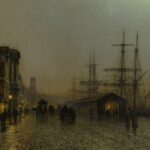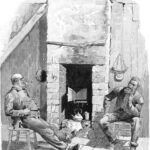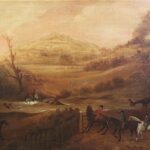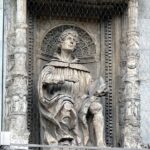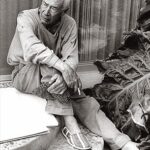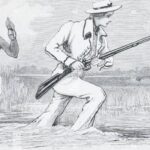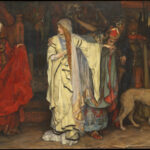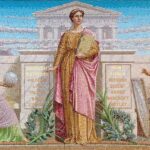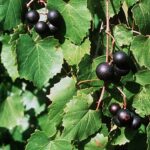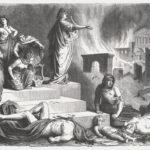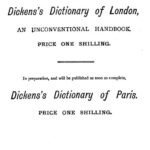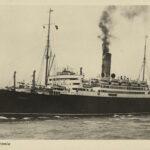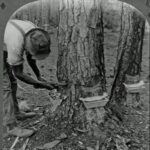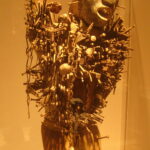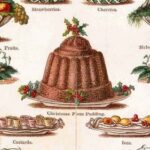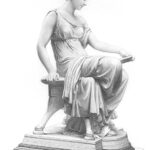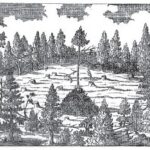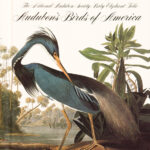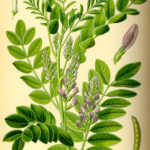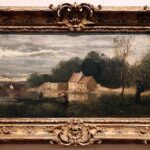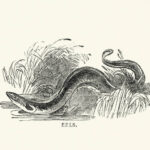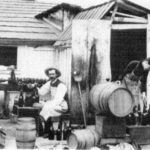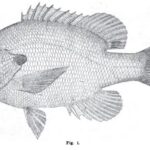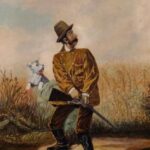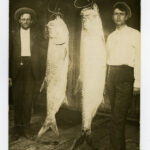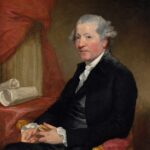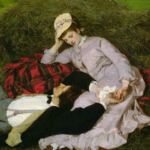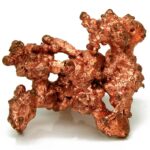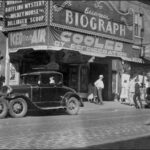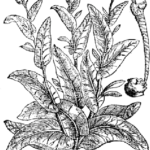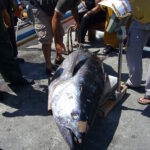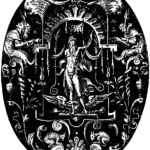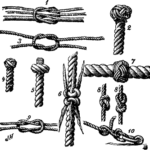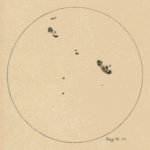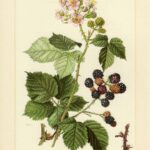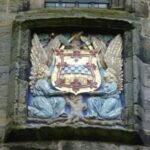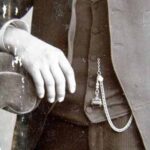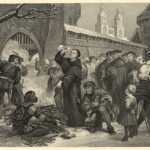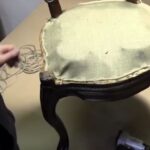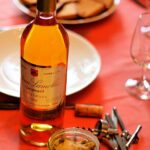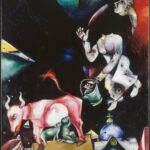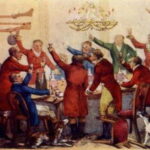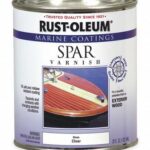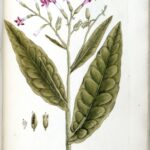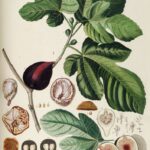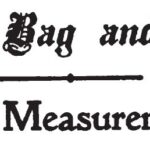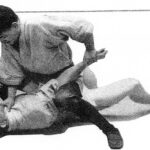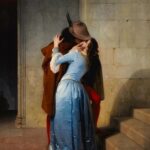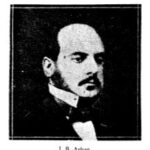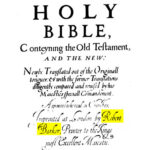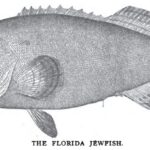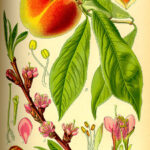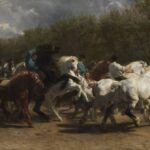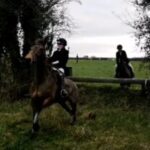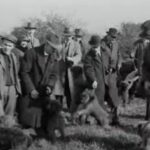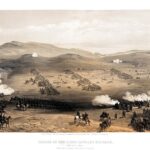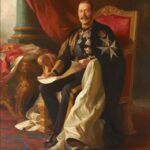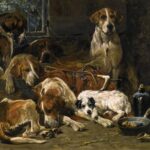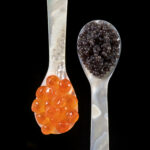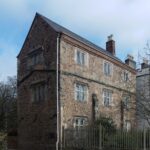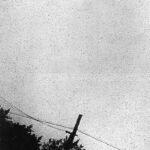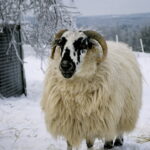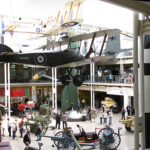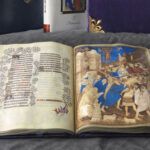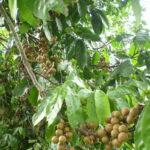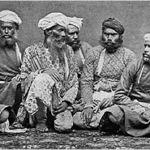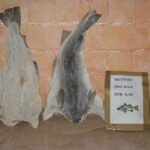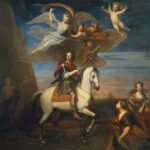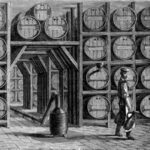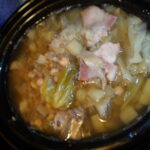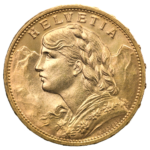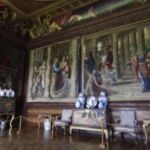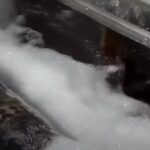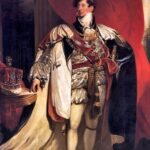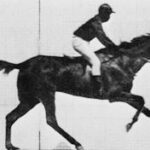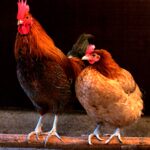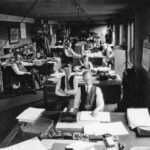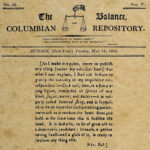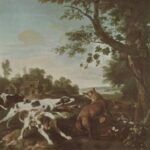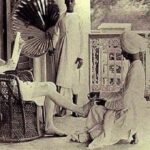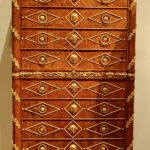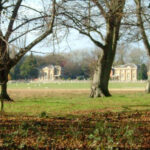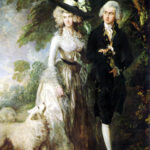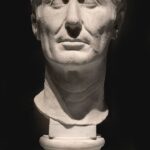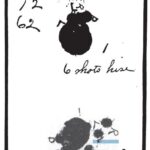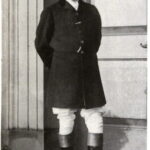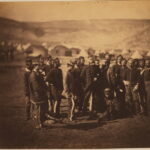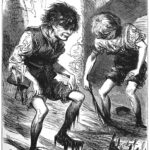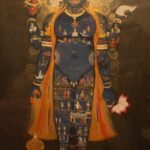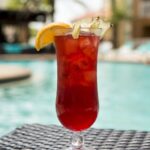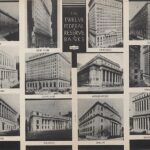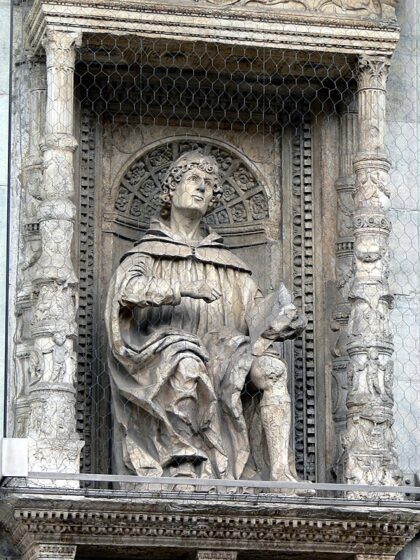
Como dome facade – Pliny the Elder – Photo by Wolfgang Sauber
Work in Progress…
THE VARNISHES.
Every substance may be considered as a varnish, which, when applied to the surface of a solid body, gives it a permanent lustre. Drying oil, thickened by exposure to the sun’s heat or a fire, is a varnish and as such has often been employed. It is, however, probable that varnishes, composed of resins dissolved in oil, have been used in very ancient times.
But it is beyond all doubt, that when the arts flourished in Greece, the composition of varnish had long been known in India, Persia, and China. It is not then to be supposed that the Greeks were unacquainted with this art. Yet such would have been the case if we give credit to a paragraph in Pliny, who tells us that Apelles was indebted for his unequalled colouring to the employment of a liquid which he calls “Atramentum,” with which he covered his pictures when they finished, and with which substance no other painter was acquainted. Pliny observes, “that there is in the pictures of Apelles a certain effect, that cannot be equalled, and that tone was obtained by means of atramentum, which fluid he passed over his pictures when the painting was completely finished. This liquid, we are told, brought out all the brightness and fulness of the colours, and also prevented the dust, or other similar substances, from impairing their lustre. It was so transparent, that it was not perceptible until you were very near to it. One of its greates advantages was, that the brightest colours, under its influence, so far from dazzling the sight, seemed as if viewed from a distance, or through a glassy medium, which imperceptibly lowered the tone of most brilliant tints, rendering them more chaste and agreeable to the eye.I.
1Unum imitari nemo potuit, quod absoluta opera atrament illinebat, ita tenui, ut idipsum repercussu claritate colorum excitaret, custodiretque a pulvere et sordibus: ad manum intuenti demum appareret, sed et tùm ratione magna, ne colorum claritas oculorum aciem offenderet, veluti per lapidem specularem intuentibus è longinquo, et eadem res nimis floridis coloribus austeritatem occultè daret.—Pliny’s Natural History, Book XXV. chap. 10.
Sir J. Reynolds believed that he saw in this article a description of the process of that plan of glazing, to which he owed, in a great measure, his admirable system of colouring.1 This glazing augmented the brilliant effect of the colours, whilst, at the same time, they were brought more into harmony, and rendered more pleasing to the eye. But this was not done with any liquid of a uniform tint; neither did it prevent the pictures from being injured by the dust; for Pliny positively declares, that no other painter could produce the saem effect of colour which Apelles obtained by the assistance of a transparent liquid, supposed to be of a brownish tint, as the term atramentum2 would imply; and that this liquid, when applied to coloured pictures, completely secured them against whatever might in any way soil or discolour them; and this can only be understood as applying to varnish.
1Refer to the note 37 on the poem of Dufreenoy, printed at the end of his discourses.
2The term atramentum is frequently used by Pliny as expressive of the fluid and carbonaceous matter of which that substance was composed. From this it would appear, that not having an exact technical term for it, he had adopted one, of which the general signification meant to describe a liquor of a brownish appearance.
—Copal varnish has this tone: it appears so, at least, when it is in the large vessels; and, when applied in thin couches, it is so equally transparent, that it does not communicate any colour to the most delicate picture to which it may be applied.
Reynolds, in adopting that meaning of the above passage, probably did so because he could not believe that the Greek painters were unacquainted with the art of making varnish, which for a long time previously have been used in the eastern countries. He rather supposed that Pliny had not well described, or clearly understood, the method of Apelles. However this may be, even admitting that Apelles had known only the preparation and the use of varnish, it rational to suppose, that some time latter (suppose in the time of the lowever empire) it was no secret to any Greek artist; and probably from them the Italians became acquainted with it, along with the elemental priciples of painting. In the works of Theophilus, already quoted, we find a method of preparing an oil varnish very well described. The process is remarkable for being the same that is used at the present day for the same sort of varnish, with merely this difference, that the varnish of Theophilus is only a simple solution of resin in pure linseed oil, without the addition of any essential oil to render it more fluid. In fact, at that time it could not have been otherwise; for the art of distillation, by which the essential oils are prepared, was not known
The varnishes have been arranged in three classes, viz. spirit of wine, (alcohol,) spirit of turpentine, and oil varnish, called “strong,” or hard varnish. Alcohol varnish not being used in oil painting, it would be superfluous to describe its preparation, which, besides, does not differ in the process of making from that made with oil of turpentine, but simply in the nature of the resins of which it is composed.
I shall not take up the reader’s time, except upon those sorts of varnish which belong to painting in oil, and either used for mixing with the colours, or employed in covering the surface of the painting when dry. But previous to showing the modes of preparing them, it is but proper that I should describe the materials of which they are composed,—such as the bitumens and resins which form their bases, and the oils in which they are dissolved:—
SECTION I.
SUBSTANCES WHICH ENTER INTO THE COMPOSITION
OF VARNISH.
BITUMENS.
These sustances, which unctuous and inflammable, are dug out of the earth, and in many respects resemble the resins so strongly, that one might well suspect them of a common origin. Of these, only asphaltum and amber are used in painting.
ASPHALTUM.
This substance is a mineral pitch, of a very rich brown colour, hard and brittle, forming compact masses. It has abright glossy fracture, and is easily soluble in oil of turpentine, and in the drying oils. It then affords a very brown and transparent varnish, but very viscous, and with such a tendency to flow off the palette, that it can hardly be used unless mixed with some of the other substances to correct this disadvantage, and fix it in its position.1
AMBER
Yellow amber, called also carabé, succin, is classed among the resins, because it is found in the earth; yet it evidently has a vegetable origin. In fact, the forms of the larger pieces clearly indicate a substance that has been liquid and flowing, similar to the resins; and we sometimes find pieces of it in which insects are enclosed, and these incident could only have originated when the amber was in a fluid state.
1Vide the articles on browns, in the Chapter on the preparation of colours.
RESINS
Amber is sometimes opaque, but often as transparent as glass; it grows darker by exposure to the air; very old works in amber being brown, whilst those of a recent date are of a bright yellow tone.
Amber differs essentially from all the other resins, not only by its superior hardness, which admits of its being cut into various ornaments, but also in its evolving on fusion a volatile acid (succinic), which flies up to the top of the receiver.
Amber cannot be fused except at a higher temperature than that used to dissolve copal. Amber varnish is, of course, very brown, and can only be employed with dark colours, to increase their strength and transparency: the umbers, for instance; the oxide of manganese; and all the brown drying colours.1
RESINS.
These substances, like the bitumens, are either hard or of a thick consistency; are very inflammable, insoluble in water, but more or less so in alcohol, aether, or the oils. With the exception of lac, which, like wax, is an animal substance, the resins flow spontaneously from certain trees, and form a viscous juice, which grows thicker and harder on exposure to the air.
Of resinous substances, we find a great number which do not relate to our subject. I shall, therefore, confine my attention to those which are proper for the making of varnish.
1In the earliest of the Italian receipts, the carabé, or amber, is placed amongst the materials which enter into the composition of varnish. It is possible, however, that they may have confounded the carabé with with the copal, which is more fusible.
GUM ANIMÉE
Under this name we find resins which do not belong to the same tree. The true gum animée flows from the courbaril tree. In clearness it resembles copal, but it is whiter and more brittle; yet it will not dissolve in oil of a temperature much lower that that gum, and it is so coloured that there is no advantage derived from employing it in place of copal. It will dissolve in oil of turpentine, but the solution is muddy; it will become clear in time by depositing the isoluble matter which remained in a state of suspension.
GUM COPAL.
This is the most brilliant and the hardest of the resins. There are two species of it; one which flows from a tree (the eleocarpus copalliferus of Jussieu, and denominated by Linnœus urateria Indica); the other kind is imported from Spanish America, and is a species of the sumac (rhus copallinum). Besides these two sorts, we find, in the copal of commerce, certain portions which are nearly the same in appearance, but are fusible at a much lower degree of heat.1 The varnish-makers pretend to discover them by their globular forms and superior whiteness. But the difference beomes evident between these two kinds in a preliminary operation, which the copal must undergo to disengage it from an opaque crust, arising probable from the action of water and the atmosphere. Formerly this crust was scraped off with a knife: the present mode of removing it is to steep the gum for two days in a strong lye; it must then be washed, and dried perfectly, and when broken up, this impurity evaporates in dust. During this operation, the softer particles, which are always few in proportion to the mass, become more soft, and adhere to whatever they touch. We therefore must be careful to put this portion by itself, to be used separately; because being more easily melted than the other part, it would dissolve first, and, by remaining in this state, too long exposed to the action of heat, it would take a reddish tinge, and thus communicate too strong a colour to the varnish.
Copal is, in general, more transparent and less coloured, though not so hard, as amber; yet it is not unlikely that copal has been cut into ornaments instead of amber.
1Reaumur, who has made many experiments in the manufacturing of varnishes, and who has succeeded in dissolving copal in alcohol and in oil of spike, has remarked that in the copal of commerce all the pieces are not equally soluble. To ascertain at once the quality of these pieces previous to commencing his operations, he tried them on the heated blade of a knife, to ascertain their capability of resisting a change of colour; some parts melted more or less readily, other parts fried like gum; he rejected the last, and only used the fusible portions.
LAC.
This material, which is incorrectly called “gum lac,” is a resinous substance, produced by an insect that had long been considered a winged ant, but which the recent observations of naturalists have classed among the gall insects, like the cochineal and kermes, and thus it has been termed coccus ficus and coccus lacca. The females of this tribe collect in great numbers around the small branches of trees, to deposit their eggs, which they cover with a resinous substance: this is the lac. It is used in making varnish and sealing-wax. The eggs and embryo of these creatures, like those of the cochineal and kermes, contain colouring matter of a complete purplish crimson.1
MASTIC.
This resin distils from a species of lentil tree, of which there is abundance in the isles of the Archipelago, and particularly in Seio. This gum is collected in the form of drops of roundish grains; is odorous,and softens so far in the mouth that it can be pierced by the tongue, and may be drawn into ribbon threads, &c. It is commonly chewed by the people in the Levant; and hence it name is derived. Nearly all of it that was collected in Scio used to be sent to the Grand Seignior, and was used in the seraglio.
Mastic will dissolve at a temperature equal to that of boiling water; but its solution in alcohol is cloudy, which shows that it is imperfectly dissolved; but in the fixed, and volatile oils, it will dissolve completely. The solution of this resin, with oil of turpentine, forms the common picture varnish.
1Vide the article “On the preparation of Indian lake.”
SANDARACH.
This gum, in colour, and somewhat in its form, resembles mastic; but differs much from it in other points: for instance, it will not soften in the mouth. It is very brittle, and dissolves easily in alcohol, but not in oil of turpentine. Reaumur assures us that he succeeded in dissolving it in oil of spike, after having steeped it in spirit of wine. I have succeeded in doing so; though, in several instances, I have foud the advantage of mixing alcohol with the essential oils. Sandarach will melt in the fixed oils at a low degree of heat; but to form a perfect combination, the highest heat is required: the solution is then of brownish colour.
OILS.
There are two distinct species of oils,—one sort, viscous and greasy to the touch; all of this class are called “fixed oils;” and those of the other class without adhesiveness, are termed “essential oils.”
FIXED OR SOLID OILS.
The true nature of these oils was not known until the experiments of M. Chevreuil upon fatty substances developed their combinations.
This experienced chemist has shown that there are in these oils two distinct substances: to these he has given the names of oleine, and stearine, or margarine. These substances, which are not acids naturally, become so when combined with metallic oxides.
With potass and soda, fixed oils form soap; oxides of lead give them a drying quality, and combine with them so far as to form a paste or unguent.
All the fixed oils are subject, in time, to become thickened by exposure to the air; but this operation is more or less active, according to the nature of the oil. Some of them, having naturally a drying tendency, will in time, become as hard as the driest resinous substances. The linseed, nut, and poppy oils used in painting, are of this description. It is not improbable that other of this class may also possess similar properties, and might be employed in painting with the same advantage as theses now in use. I have read in some work that it is possible to extract from the stones of raisins, a drying oil, said to be extremely proper to be employed in making hard varnish.
LINSEED OIL.
This oil has the fullest body, and dries better than any of the three oils in use amongst artists; its colour is a strong yellow, but this effect does not arise from the action of the fire to which the seed is exposed in extracting the oil from it. This colour, in fact, proceeds from the pellicle which covers the grains, and which contains a strong colouring matter soluble in oil. Linseed oil, cold drawn, as used in medicine, is equally coloured with the other sort; but, like that of wax, this colour is carried off by exposure to the sun. Linseed oil is extensively employed in the manufacture of hard varnish, because it is of a more drying nature, and preserves it transparency better that the other oils.
NUT OIL.
When cold drawn, this oil has very little colour, and the common sort has even a less tinge than oil of linseed. Some give it a preference for pictures much exposed to the air; besides, it does not become so dark as linseed oil by the actions of oxide of lead.
OLIVETTE OR POPPY OIL.
This is the most colourless, but the least drying, of the three oils. As the poppy plant is much cultivated in Flanders, we may suppose that this oil has obtained a preference in the school of the Low Countries, where the poppy is in many places called the olivette.
TO PREPARE DRYING OIL.
From the tendency that several of the oxides and metallized salts have to unite with oils, and thus to render them more drying, has resulted a great many different receipts for the preparation of drying oil. Some recommend sulphate of zinc, calcined verdigris, plaster of Paris, umber, oxide of manganese, &c; others prefer putting into the oil a crust of bread and a head of garlic. But, in all theses preparations, litharge is the chief ingredient. The oxide of lead having the greatest power over the oils, to recommend other substances would be superfluous.
In this process litharge, in the proportion of one eighth part, should be reduced to the finest powder; this condition is indispensable to its perfect solution.
The vessel containing the oil and litharge is then to be placed on a slow fire, and frequently stirred with a spatula: a considerable quantity of scum is soon formed; and the ebullition is so great at times, as to make it necessary to withdraw the vase, to prevent the oil running over.
When the scum has quite disappeared, it is a sign that the oil is in a proper state; it is then allowed to stand still; then the litharge which has not combined precipitates, and in a few hours the surface of the oil will be covered with a pellicle, which indicates that the operation is complete.
This preparation is of the brownish colour, which is increased in proportion to the the time that it may have been exposed to the action of a strong fire; it becomes clear when allowed to rest, but is never colourless. By operating at a lower temperature, in a balneum mariœ (a water bath), or even in mixing water with the oil, and supplying its loss by evaporation, an oil less drying is obtained, but less coloured, which colour grows more faint by exposure to the light.
A drying oil nearly colourless may be obtained by combining linseed, or nut oil with litharge, and triturating them together for a considerable time: this will produce a sort of yellowish creamy substance, which, being allowed to rest, soon becomes clear; but if there be not time to wait, this fluid may be filtered through blotting-paper; which soon goes off when exposed to the light.
By letting fall some of the oxide of lead, which it held in solutions, this operation may be completed in a few hours. It is evident that the oil in combination with the litharge forms two distinct substances: the transparency of the first is not impaired by the oxide it contains’ the other is a thick substance, a kind of soap, in which even the oil is changed, as if by the alkalies. This matter will be noticed more fully in the chapter on varnishes.
The chemical affinity of the oils and the oxide of lead is such, that they may be combined by triturating the oil with a leaden muller ; the oil then assumes a gray colour, arising from the solution of the lead ; this mixture being collected in a cup, the metal soon subsides, and the oil, which floats at the top, is very clear and dries better because it holds in solution a portion of the lead.
Where litharge cannot be had, lead filings and pieces of flat lead may be put into a bottle with linseed or nut oil, and frequently shaken ; in a few days this will produce an oil almost colourless, and capable of drying the lakes, as well as the ochres. As the drying oils become fat in a short time, it is best to prepare only a small quantity at once.
ESSENTIAL OILS.
This class of oils has very different qualities from the solid oils ; these are thin in consistency, are caustic, odorous, and easily ignite at the near approach of any flaming substance.
OIL OF TURPENTINE.
This spirit is much used in oil painting, and in the preparation of varnish. It is prepared, by distillation, from the rough turpentine of commerce, which exudes from the pine, larch, and fir trees. When properly distilled, this essence is without colour : when it has an amber tint, it may be rendered colourless, without a new distillation, by merely mixing with it a little quick lime in powder, and shaking the vessel with the mixture for some time ; the lime precipitating, carries with it the colouring matter, and when this has quite subsided, the essence will be as clear as water. To hasten the separation of the lime is easily done, by filtering the mixture through unsized paper.
OIL OF SPIKE.
This oil is drawn, by distillation, from a large species of lavender, which is very common in the ancient poivince of Languedoc. It is called “aspic” in commerce. This oil is adulterated with oil of turpentine, and it is probable that even the best sort is made by distilling that essence several times with lavender or aspic flowers. Reaumur has succeeded in dissolving copal in it. This oil has more body that oil of turpentine, and from this I infer that Reaumur’s varnish ought to be very durable.
ROSEMARY OIL.
It is probable that this oil is prepared as the last-mentioned oil. It has not so bull a body as the spike oil, and is therefore better calculated to make varnish, and it appears to have a stronger action on copal.
NAPHTHA.
Called also volatile oil of petrolium, or “rock oil,” is collected among the rocks in Italy and other places. A very strong odour exhales from it, similar to that of turpentine. The Persian naphtha is greatly celebrated, and much employed in the manufacture of varnish. it is probable that the ancients made their varnish by dissolving resinous substances in naphtha. When distilled, it perfectly colourless ; it may thus be used in the preparation of the varnishes.
Armenini, in chapter ix. of this book, give receipts for different sorts of varnish, and describes one, composed of naphtha (oglio di sasso) and of turpentine ( oglio di abesso), which, he assures us, was used by Parmegiano and Corregio.1
Oil of naphtha, as well as those of lavender and rosemary, gives out so strong and odour, that in this respect it makes the use of them rather disagreeable.
In the sixthe volome of the Annals of Chemistry, we find a receipt of Monsieur de Saussure’s for destroying the odour of naphtha, without altering its powers of solution. The same method is equally applicable to other volatile oils, and when so prepared. there would be nothing to prevent their being employed in the preparation of vanish.2
1See, at page 33, the note relative to the varnish described by Armenini.
2This process consists in mixing, by small portions at a time, the sulphuric acid of commerce with oil of naphtha, and then allowing this combination to remain in contact for several days in a flask well closed from the air, taking care to shake the vessel frequently. This operation given a black sediment, or precipitate, which appears to be a combination of sulphuric acid and the odorous principle of the oil. The clear liquor is then drawn off and the portion of acid with which it is united is removed from it by saturating the liquid with a solution of caustic potass ; or quick lime will do equally well.—Annales de Chemis et de Physique, 1817, tome vi. p. 308
ITALIAN VARNISH.
SECTION II.
TO PREPARE VARNISHES PROPER FOR PAINTING.
ITALIAN VARNISH.
I have already notice the strong oil prepared in Italy from a very remote period, and which possesses the double advantage of drying well, and preventing the flowing about of the most liquid glazing. It is prepared by incorporating, over a slow fire, two parts of linseed or nut oil, with one part of litharge, ground as fine as possible. 1 The mixture must be frequently stirred with a spatula, to quicken the operation. The combination is completed in a longer or shorter period according to the quantity of the material employed. This is ascertained by dropping a small quantity of it on a flag, or other cold surface, when, if it fixes in cooling like tallow, the operation is rightly done; if no, then it is clear that the process has been stopped too soon : the oil must again be placed on the fire, and about a sixth part of pure white wax added to it. This is useful in all cases, to give a firmer consistence to the preparation. When the wax is entirely incorporated, the mixture is to be thrown on the grinding slab, and it should be ground well with the muller to prevent any separation, and to cause the parts to be perfectly united.
1Nut oil gives less colour in this preparation than the oil of linseed.
In using this oil, some mastic varnish must be added to it, and well mixed upon the palette. This mixture forms a soft pomatum-like substance, which flows freely in the pencil, and which remains in its place, without flowing about. It is therefore proper for glazing ; but the addition of varnish to it is necessary to prevent its frothing under the brush, as it would do like soap, and this accident would prevent the work from being clearly seen. This combination is in fact a soap, which, except that it is not soluble in water, has all the other qualities of the common soap formed by the union of oils and alkalies.
It would, therefore, be better to prepare it in boiling water, as we prepare common soap ; for it is not easy so to regulate the temperature of the fire that it shall not exceed the proper degree, and the heat of boiling water is always the same. As the water evaporates, more water must be added; and when the union of the materials is completed, the water remaining at the bottom of the vessel is found colourless, and has a sweetish taste. To this liquid the name glycerine (the saccharine principle of oils) has been given.
Also, by a long continued trituration, the same combination could be formed, which would have less colour, especially if we use oil clarified in the sun.
It is of much importance that the litharge be pure ; for, should it contain oxide of copper, this substance would be dissolved by the oil, and would give the varnish a greenish tint.
TO MAKE FLANDERS VARNISH.
Dissolve grain mastic in alcohol : this operation is requisite to detach the impurities which are mixed with the resin. The proportion of spirits ought to be sufficient to cover the mastic, and one-fourth part more above its surface.
The solution must be carried on with a very slow heat : when completed, the liquid is muddy, but it clears very well in a short time ; as the impurity falls to the bottom, this subsidence may be accelerated by filtering the mixture through cotton.
The prepartaion being thus freed from all impurities, one-eighth part of fine white wax is to be added to it, and the mixture is then to be fused in a balneum mariœ (water bath); when thoroughly melted, it should be thrown into a bason of cold water, where it is to be worked with two wooden spatulas, care being taken not to let the fingers touch it, for it is so clammy that it would difficult to remove it from the skin.
During this operation the alcohol separates from the resin and wax, uniting itself with the water, and the substance becomes more firm by degrees, so that at length it may be handled without the danger of its sticking to the fingers, provided that they are kept wet. The composition is then formed into balls, or rolls, which may be preserved to any period by keeping them from dust.
The mastic of commerce is sometimes mixed with sandarach ; but it is easy to discover this adulteration at the time of working the mixture in the cold water, for the spirit of wine, though weakened by the water, still holds the sandarach in solution ; it carries that resin with it, and this combination, in precipitating, gives the water a milky colour. When this happens, the mixture is to be washed until the water comes away quite clear.
To make use of this prepared substance, a portion of it is to be melted, at a slow heat, in white drying oil, nearly equal parts of each ; when united its fitness is to be tried on the palette with the knife ; and if it is found too soft, add the mixture ; if too hard, add the oil.
As this compound contains drying oil, a pellicle is soon formed on its surface, for which reason it would be adviseable not to melt a greater quantity of it than could be used in a few days, and to keep it under water.
Or the mastic and oil may also be combined thus: Take forty grains of mastic varnish, made with equal parts of mastic and oil of turpentine ; Forty grains of nut, or poppy oil, clarified in the sun ; Five grains of acetate of lead in powder : expose them to a light ebullition in a balneum mariœ, and then pour the mixture into pure water, and stir it for some time, renewing the water to carry the portion of acetate not combined.
If we could get genuine mastic, free from impurities and adulteration, there would not be any occasion to dissolve it in alcohol ; it could be melted and incorporated at once, and then washed and rendered fine in the cold water.
We may also, with equal success, dissolve the mastic in clear drying oil. Allowing it to rest until all the earthy particles have subsided, and then drawing it off carefully, add the was as before.
ENGLISH VARNISH
When mastic varnish is mixed with drying oil which holds litharge in solution, the mixture soon assumes the appearance of a firm jelly ; which is strong in proportion as a greater quantity of litharge, and a stronger varnish, have been used.
This substance holds its place on the palette like the colours, never moving from its place.
The peculiar nature of this mixture makes it particularly useful in glazing, for it flow under the brush with great facility.
But instead of using brown drying oil, it would be preferable to use that which is prepared without fire.
But instead of using brown drying oil, it would be preferable to use that which is prepared without fire. It is also better that the mastic should be of a full body ; for if the essential oil is smaller in proportion to the resin, the drying quality will be less active, and the operation can therefore be carried on in painting, much longer, without being interrupted by the vehicle becoming too thick.
OIL COPAL VARNISH.
This varnish has been known a long time, and has, in all probability, been used by many of the Italian painters, as, I believe, it was by Fra Bartolomeo, whose pictures are remarkable for the brilliancy of their colours. Its preparation is thus described by Theophilus, in his work already mentioned :—Put some linseed oil into a new earthen vessel ; then add a sufficient quantity of resin called fornis, ground to an impalpable powder ; the resin resembles very much transparent incense, but its fracture is brighter ; place the mixture on lighted charcoal, and let it digest until it is reduced to one third part ; but great care must be taken that it shall not boil over, or the flame rise high enough to communicate with it as it would then blaze out instantly, and it would be extremely difficult to extinguish it. Pictures prepared with this varnish are brilliant, and remain without and alteration.1
1Pone oleum lini in ollam novam parvulam, et adde gummi quod vocatur fornis, minutissimè tritum, quod habet speciem lucidissimi thuris ; sed cum frangitur, fulgorem clariorem reddit; guod cum super cabones poэueris, coque diligenter sic, ut non bulliat, donec tertia pars consumatur ; et cave à flamma, quod periculosum est nimis et difficile extinguitur si accendatur. Hoc glutine omnis pictura super linita lucida fit et dcora ac omninò durabilis.
Place around a brazier three of four granite or other stones capable of resisting the action of fire ; upon these supports is to be placed a common earthen vessel containing the resin fornis, called by the Romans glassa ; cover the vessel with a smaller one, pierced with holes in the bottom : lute them together so closely that the vapour may not escape between their joints : the resin is to be stirred with a crooked iron rod, furnished with a handle, and the melting of it carefully ascertained.
Meanwhile, some linseed oil is to be prepared in another place, and poured, b degrees, in a boiling state on the melted resin, at the moment when it is completely fluid. This state of it can be ascertained by drawing out the iron rod, off which it will run in threads. Stir it well, to assist the incorporation, and let it remain some time longer on the fire ; try it occasionally, be dropping some of it on a piece of wood or stone, to ascertain whether it has a proper consistency.
The best proportion of the materials to be used is, one part resin, and two linseed oil : when sufficiently boiled, take it off the fire, and set it to cool.1
1Compone quatuor vel tres lapides qui possent ignem sustinere ità ut resiliant, et super ipsos pone ollam ruem, et in eam mitte suprà dictum gummi fornis quod Romana glassa vocatur; et super os hujus ollæ pone ollam minorem quæ habeat in fundo modicum foramen. Et circum lineas ei pastam ita ut nihil spiraminis interipsas ollas exeat. Habebis etiam ferrum gracile manubrio impositum, under commovebis ipsum gummi et cum quo sentire possis ut omnino liquidum flat. Habebis quoque ollam tertiam super carbones positam, in quâ sit oleum calidum ; et cum gummi penitùs liquidum fuerit, ita ut extremo ferro quasi filum trahatur, infunde ei oleum clidum, et ferro commove, et insimul coque ut non bulliat, et interdum extrahe ferrum et lini modice super lignum sive super lapidem ut probes diversitatem ejus ; et hoc caveas in podere ut sint duæ partes olei et tertia gummi. Cuque ad libitum τuum coxeris, diligenter ab igne removens et discoperiens refrigerari sine.
We are not aware what kind of resin Theophilus designates as fornis and glassa Romana. We do not find these terms in our glossaries ; but every inquiry proves, that there is not any other resin to which this description would apply. The American copal was not known in the time of Theohilus, but the Italian painter must have been long acquainted with that of India ; and it is from that region that the greatest proportion of the copal of commerce is still brought.
The two method described may be successfully employed. And it is worthy of remark, that the proportion of one part or resin, to two of oil, must produce so strong a varnish that it would not be possible to use it without diluting it with an additional quantity of oil. If the text be correct, we must suppose that only a part of the resin was dissolved : for when the whole is to be united, it will require four or five parts of oil to one part copal. I am also of opinion, that the intention of Theophilus, in directing that the oil should not be boiled, was, that its ebullition might not become gaseous, and rush out of the vessel.
Gum copal will neither melt, nor combine with oil, until the latter is at the boiling point. This is the moment of which we ought to take advantage, if we desire to have a varnish very slightly coloured. When the operation is carried on in a glass mattrass, all the points connected with it may be observed with exactness, and in this way it is also most likely to succeed.
For this purpose a glass mattrass, with a short neck,1 is used; this is to be filled about two-thirds, with a mixture containing five parts of nut oil and one part of copal, finely powdered.
1If the neck of the retort was long, the water which is evolved with the other vapours would condense, and, flowing back again into the vessel, would cause those explosions that are always disagreeable, if not alarming.
To prevent any risk in approaching the fire, and to manage the process carefully, the neck of the mattrass must be carefully fastened by iron wire to the end of a longorked stick. Thus prepared, the operator holds the mattrass over a furnace filled with ignited charcoal, without any flame, and care must be taken not to bring it forward too suddenly. When the oil has acquired a heat superior to boiling water, the copal is seen in agitation, ascending to the surface of the liquid ; the temperature rises progressively ; the resin ascends in a greater volume ; and vapour begins to leave the aperture of the vessel : by degrees this becomes abundant, and fills all the vase ; the surface of the oil tumifies like milk when about to boil, and it would evaporate in foam if the vessel were not removed a little from the fire. This is the moment at which the copal begins to dissolve : the oil changing to a state of vapour, has acquired the proper degree of heat to effect that object, and by giving gently a rotatory motion to the mass, the white vapours and scum soon disappear, and the fire being seen clearly through the liquid, indicates that the operation is complete.1
1When the oil has been exposed a sufficient length of time to the rays of the sun, it no longer tumifies, neither does it give out any scum. Should it have become very viscous, six parts of oil must be added, otherwise the varnish will be too thick for use.
When the copal has not been well ground, some small lumps will appear, which could not be dissolved because of their size : but this may be done by prolonging the ebullition: the varnish would of course become more coloured by remaining longer exposed to the fire. It would, therefore, be better, previous to the operation, to pass the pulverized copal through a silken sieve, or still better to grind it well with oil before it is put into the mattrass : this will certainly quicken the operation, and consequently the varnish will be less coloured.
The mattrass might be placed in a sand bath, and allowed to remain there without being stirred until the whitish vapours begin to fill up the cavity, and the oil mounting in foam, it would be in danger of rushing out of the vessel ; but in this case the operation would be much slower, and the fire must be much stronger, to bring the sand up to the degree of heat required. I have tried to produce this combination in a silver vessel, but did not succeed ; for the external air prevented the resin from heating, and it was merely softened, though coloured strongly.1
1 I am quite persuaded that we should always succeed in dissolving the copal when reduced to an impalpable poder, if we took the pains to project it in small portions upon the boiling oil, and then waiting patiently until that was dissolved ere we added another part of the powder ; but varnish made in this way would not doubt be a good deal coloured.
It is, therefore, better to employ a mattrass in which the heat is strong, and kept nearly equal ; but, to give more certainty to the operation, I would advise that no more that one or two ounces of copal should be dissolved at a time ; but should it be intended to melt several pounds at one time, recourse must be had to the second process of Theophilus, which, as I have stated, is the same that is followed at the present day in making oil varnish ; substituting a mattrass of copper, with a wide opening, instead of the two vases luted together at their edges. This mattrass should be furnished with two handles, for the convenience of removing it, and its edge should be surrounded by a ledge, which will form a channel: this is a most useful appendage; for, without the greatest care in constantly stirring the substance, it foams, rushes forth, and would burst into flame, were it not prevented by this trough.
With this apparatus five or six pounds of copal may be sued at a time. Some very experienced manufactures have assured me, that this quantity is the most proper ; they say that if only one pound is used, the varnish imbibes a strong colour, and that only the same thing will occur if ten pounds are used. But I know not why, with an apparatus properly constructed, we should be unable to dissolve a pound of copal into the best varnish.
As soon as the copal begins to dissolve, whitish vapours arise from the neck of the mattrass, which increase abundantly ; it must then be carefully stirred about with a fine iron spatula, to prevent the melting resin from boiling over, and to accelerate the fusion by changing the surface. The process is complete when we no longer observe any more pieces of copal floating about, and when, in drawing forth the spatula, the resin runs rapidly in drops, and falls off without forming threads.
Upon this fused matter the boiling linseed oil is to be poured slowly, stirring it well at the same time to insure its union ; because the temperature of the boiling oil being inferior to that of the melted resin, the latter would lose its fluidity if the oil was poured upon it at once, and their union would be imperfect.
When this incorporation has taken place, the spatula is drawn out, and some of the liquid is dropped on a piece of glass : should the drops be perfectly transparent, the union is complete ; if cloudy, then the mattress is allowed to remain on the fire until the drops become transparent ; this soon takes, place, but the varnish is of a higher colour.
When this operation has terminated, there only remains to be added the oil of turpentine, to give the mixture that degree of fluidity which is desirable : for this purpose the mattrass is taken off the fire, having its orifice well covered with a wet cloth, to prevent the oily vapour from expanding, the odour of which is very disagreeable; the mixture is allowed first to cool a little, merely to prevent the volatile oil from becoming ignited.
The manufacturers of varnish usually dissolve their copal in the open air, to prevent the accidents to which the operation is exposed by catching fire : a single spark from the furnace is sufficient to ignite the vapour, which issues in a large quantity from the mattrass. Whenever this happens, the flame must be stifled by throwing over it a wet cloth, kept ready for that purpose ; but a coverlid, furnished with several folds of clothe, would be still better, for by its handle, it many be applied instantly to the vessel.
But these accidents could not happen if the furnace was constructed so as to prevent all communication between the fire and the vapour, and if they would use a very simple apparatus, which one of the most experienced manufacturers has had constructed, according to an idea which I communicated to him ; the contrivance not only prevents the possibility of the vapour igniting, but the bad smell is also destroyed by it.
This apparatus is composed of a tine or copper tunnel, about two feet in length, which is inserted into the neck of the mattrass, and the upper end is closed with iron wire : the vapours easily pass through, become inflamed and burn like gas : the neck of the mattrass, into which this tunnel is fixed, is sloped and resembles the neck of a flask ; upon this inclined plane is a tabular opening, stopped with a cork, which can be taken out to allow of the resin being stirred with the spatula.
The same manufacturer using it in the open air, and finding that the wind extinguished the flame, conceived the plan of substituting, for the straight tunnel already mentioned, one of the curved form, which descended near the ground. The fumes condensed in this tunnel ; and cooling readily, he collected, by distillation, volatile oil of copal which, when rectified, may become very useful.
In this way he obtained the double purpose he had in view,—in preventing accidents from fire, and in destroying the offensive smell. The safety and salubrity of this method, it is hoped, will encourage our varnish-makers to abandon the barbarous method now generally in use, and that they will adopt this apparatus, which may be still further improved.
It is recommended to use a strong heat in melting the copal. This resin being bad conductor, the caloric penetrates it very slowly ; and the part first dissolved gets browner in proportion to the time it is exposed to the action of the fire. Always near the close of the operation, care must be taken that the fire be not too strong : too great an elevation of the temperature would cause it to explode ; and for this reason it would be proper to arrange the furnace in such a way as that it may be moderated at will, or, which is not difficult, to have the power of interrupting its communication with the mattrass. The varnish would be less coloured if the copal could be drawn off as it fuses, and then incorporated with the oil. This object would be obtained by means of an ingenious apparatus with Tingry has proposed for a different purpose, and of which the original idea is to be found in a “Treatise on Varnishes, ” by P. Bonnani, who states that he had it from a German.1 This apparatus is composed of a cylindrical furnace, either cast or of earthenware, with holes properly arranged around its diameter, to introduce the air required in the combustion. At the bottom of this furnace is an opening of circular shape, in which should be placed a crucible of conical form ; this is open at both ends, the upper being intended to receive a lid closely fitted on.
1“Trattato sopra vernice detta communemente ‘Cinese,’ dal Filippo Bonnani, della compagnia di Gesu.” This work has been translated into the French language, and the translation has the rare merit of being faithful to the original text.
In this crucible a bog of metallic wire is to be placed, similar in form, but smaller, that it mat not touch it in any point ; it is secured by hooks of wire ; this bag is then filled with copal reduced to very small pieces, and directly closed with a lid, which is firmly fixed b means of iron wire, and it is luted by a mixture of argill and sand.
The crucible, being thus prepared, is so placed in the furnace that its aperture will be exactly in the direction of the opening in which it is fixed : the furnace is then placed upon a tripod, and the crucible is surrounded with lighted charcoal. The caloric soon penetrates to the copal, which, as it melts, flows down into a vase containing boiling linseed oil, with which it is incorporated by being stirred up with a spatula of iron.
Whilst the copal is melting, a great quantity of vapour issues from the crucible, and, being drawn towards the air opening in the furnace, would inflame very quickly, if the communication was not cut off.
This may be done by a large plate or iron, with an opening it of the diameter of the crucible, the lower end of which is left outside the furnace, and by directing the vapour in a particular channel. This can be done more simply by covering with wire the air-holes of the furnace, as the ignition will only tack place on the outside of the wire.
As the copal will not incorporate with the oil, if the latter is not actually boiling, care must be taken to have it quite ready ; for the moment that the furnace is lighted the copal begins to melt.
The proportion of oil employed must be determined by the species of varnish intended to be made. four or five parts of linseed oil to one of resin will give a varnish that mixes easily with the colours, and which renders them more full and brilliant without drying more rapidly. If a more quickly drying varnish is required, only two parts of oil should at first be added ; the varnish will then be so thick that it cannot be used : but, before it cools, two other parts of white drying oil may be added, which must previously be heated to the same temperature.
Finally, should a varnish be required for covering pictures when they are completely dry, only one part of oil is required for two of copal : this should be afterwards diluted with oil of turpentine, sufficient to give it the proper degree of fluidity.
Linseed oil, even when very clear, still contains some mucilage, from which it must be purified previous to the operation : this may be done by exposing it for some weeks to the rays of the sun.1
Drying oil is employed in the varnish which is afterwards mixed with oil of turpentine ; and as that oil must be in a boiling state, some precautions ought to be taken to prevent its becoming too highly coloured. It will, therefore, be best to boil it first over a slow fire, with only a sixth part of litharge finely ground, and then filtered ; when it is thus separated from the uncombined litharge, it may be boiled without danger of its growing darker.
1The blanching of the oil may be much accelerated by exposing it to the action of the sun in shallow saucers of porcelain ; five or six days will produce as much effect upon the shallow liquid with extended surface as could be effected in six months upon the quantity contained in a pint bottle.
PICTURE VARNISH.
The usual method of preparing this varnish is by dissolving mastic in oil of turpentine, adding to it a sufficient quantity of fine turpentine : this preparation has a full body, is viscous, and gives brilliancy to the varnish. But I have already stated it is not durable, from its containing an excess of oil : it only dries on the surface, and this causes the picture to crack ; it would, therefore, be better to omit the turpentine, and to increase the quantity of mastic. The following proportions may be used:—
—100 parts of mastic,
—200 of oil of turpentine.
The best mastic should always be chosen for this purpose ; but as the impure parts are not soluble in the essential oil, its colour is not injured by them : they naturally separate and descend, leaving the solution transparent ; or its colour is not injured by them : they naturally separate and descend, leaving the solution transparent ; or it may be filtered through a tunnel with a piece of cotton in it.
The solution of the mastic may be accelerated by grinding it ; but it dissolves so readily that this may be dispensed with : in fact it malts as soon as the heat reaches the boiling point, and even sooner; and if only the sun’s heat is used, you will have a colourless varnish.1
1If the solution is to be made by the heat of the sun, it will be requisite to reduce the mastic to a very fine powder, and only to add the spirit of turpentine by small portions at the same time stirring the mixture with a spatula until they are completely incorporated.
Copal varnish could be used advantageously for the first couch instead of mastic. Its superior solidity will preserve the work from the effects of frequent washing ; and when the picture is perfectly dry, a fine couch of mastic may be laid on it, which at any time may be removed without in the least endangering the glazing. But many artists object to the use of copal varnish, because it has a slight colour, like amber, and cannot be made as colourless as mastic : yet this is not the fact ; for I have succeeded in doing so by following Reaumur’s method, by dissolving, without heat, the softer copal : it is longer in drying, but is very proper for pictures. The method is to add the dissolvent by degrees, adding, each day, some fresh material, as the former portion becomes absorbed.
Reaumur used oil of spike, which has more affinity for copal than oil of turpentine ; but as that oil is more solid, and evaporates more slowly than the latter, I have only used it to soften the copal, and have finished the operation with the essence in the following manner :—
I have reduced to powder the softer kinds of fine copal, and have ground it in a mortar of porcelain, with a little of the volatile oil of lavender, the purest I could obtain ; the copal is soon softened, and becomes a sort of thick jelly ; I then allow it to remain for a day, stirring it occasionally ; on the following day I added a few drops of turpentine oil, and triturated them together, continuing this treatment until the union was complete, which occupied three weeks in summer. I have also employed æther to commence the solution, and finished as before.
This operation would be completed in a shorter time by heating it in some degree ; but then the dissolvent must be added drop by drop ” for when the solution is nearly complete, should too much oil be added, it will not combine, and even a separation takes place between te oil and the resin; when this happens, the oil must be drawn off, and returned in smaller portions. I have use the essential oil of rosemary for that of spike, and it has produced an effect much more rapidly in dissolving the copal, particularly if a little spirit of wine be added. The latter oil is more drying, and would be most useful in the preparation of varnish ; but its odour is so strong that few persons like to use it, though, as I have stated before, that pungent smell may be prevented.
CHAPTER III.
………………………
ON THE USE OF VARNISH WITH THE COLOURS.
Of the four species of varnish, which I have just described, the process for making the copal varnish appears to me entitled to a decided preference: 1 it gives greater brilliancy and transparency to the colour ; and though it dries slowly enough to allow of the most careful execution, yet it dries completely, and becomes very durable. It is not so firm on the palette as the other; but it may be prevented from running down by adding to ti a little mastic, wax, or hard sperm. In the following chapter I shall point out the precautions to be attended to when it is used in glazing. The selection of these varnishes chiefly depends upon the use they may be applied to, and the peculiar habitudes of each artist in working with colours more or less liquid.
When it is intended to paint up at once on a very smooth ground, a very viscous varnish must be rubbed of the surface, or the colours will not adhere to it; this ought to be rubbed on with a very stiff brush ; it will give a body to the colour, rendering it fine, and preventing a fresh touch from taking off that on which it is laid.
Should it be require to glaze a great portion of a picture, the varnish must be made liquid enough to flow freely under the pencil, without spreading beyond the place to which it applied. In such cases a little practice will soon teach us to choose the best for our purpose, observing that it can be rendered more solid by the addition of the copal.
It often happens that very skilful painters have not any great facility of hand ; some are obliged, as were Leonardo da Vinci, Dominichino, and Rembrandt, to return several times to their work. Those, therefore, who have a similar slowness of execution, should be careful in their commencement to use colours of a very drying nation ; for colours that are slow in drying are more liable to be disturbed and altered.
When the work is not intended to be painted up at once, and when it is necessary to return several times to the principal parts, there must not be any varnish used in the first painting, and but a small quantity in the next operations. It is in the finishing that all the transparency and brilliancy of the colour is to be brought forward : and, more especially to prevent absorption, to secure the complete drying of the colours in the lower as well as the upper couches, it will be found useful to use distemper grounds. 1
1 See Chapter V. One the preparation of panels and primed cloths.
SECTION I.
ON GLAZING
The effect produced by the colours used in glazing is such, that it is impossible to produce any thing like it with solid colour; it forms a distinct series of tints, without which it is impossible to represent transparent objects; it is to this power that oil painting owes its supremacy over distemper painting; but as it is of great consequence to imitate the transparency of nature, so we should be careful so to use our means as not to overlook the advantages derivable from the contrast of unglazed colours. It is a fault of the Flemish school that their glazing is sometimes applied in wrong situations, and where had the colours remained opaque, a better effect would have been produced. Suppose, for instance, a clear water near a rock, or fine bank, it is evident that the opaque bodies should be painted with mat or dull colours, and then the glazing employed in giving transparency to the water would produce a more natural effect.
Glazing is never rightly performed except when it gives to the picture the effect of coloured varnish.
To obtain this essential object, the varnish should be well prepared, it should flow freely in the pencil, and not spread beyond its place ; and the colours should be prepared and ground as finely as possible.1 By attending carefully to these conditions, such opaque colours as vermillion, the oxides of iron, and even Naples yellow, may be used in glazing, and product tints that cannot be obtained by any other means. It is always best to glaze as soon as the picture is dry enough to prevent the glazing being absorbed ; it then forms a union with the colours beneath it, and is less liable to be scoured off in the cleaning. This, however, is not always possible with some glazing which affect the general tone of the picture, and which cannot be used until it is nearly completed.
1The perfect trituration of the colours increases their brightness and transparency.
With respect to the glazing on solid colour, which we see so frequently practised in the works of Rubens, and which are th emost lasting, they must have been touched on when the colours on which they are laid had become firm enough not to be disturbed by the pencil.
It sometimes happens that the parts to be glazed become too dry, an then the glazing runs off them like water from an oiled surface : when copal varnish has been used, the work is particularly liable to this accident. In such a case it is best to wash the part with alcohol in the glazing, or moistening the brush in that liquid : this will make the glazing lie on quite smoothly. It would answer equally well to apply at first a very light couch of the drying oil and mastic varnish described at page 81.
The intention in glazing pictures is to give a natural and agreeable mellowness to the execution of the work. For this reason it is, that those parts of the picture intended to be glazed should be painted with firmness in solid colour. It should be borne in mind, however, that softness is not necessarily the result of glazing ; and the pictures of the great masters of the Venetian and Flemish schools give abundant evidence of that fact. In glazing, it is of great importance that we should take into account the change that time occasions in the colours of oil and varnishes. It is, as we shall prove in the next paragraph, quite inevitable that they should take a yellowish tone, of a lighter or deeper shade according to the time they may have been painted ; therefore, such precautions must be taken as will prevent, as far as possible, so great a disadvantage.1 For this purpose, when bright parts are glazed, to which even a slight tinge of yellow would be a disadvantage, there should be only the smallest portion of oil used. Besides, the glazing ought to allow for the alteration which this yellow tone will produce in the original colour. For instance, if we wish to glaze a grey shadow upon white, it is better that the violet should predominate than the red, for the mixture of yellow and violet produces the true tint required.
1 Several of Titian’s pictures are covered with a bistry tint, produced by the varnish used in their glazings having turned yellow. Such changes are not observable in the pictures of Fra Bartolomeo ; a fact which proves that the latter employed a better varnish. Neither is the above defect to be seen in the genuine works of Rubens : possibly he may have composed his shadow tints with a mixture of ultramarine lake and Dutch pink : the fading of the latter would balance against the yellow tendency of the oil.
SECTION II.
ON THE EFFECTS WHICH LIGHT AND AIR PRODUCE
UPON OILS AND RESINOUS SUBSTANCES.
In describing the natural properties of oils, I have stated that the various shades of yellow colour arise from a colouring substance, which produces the same effect on wax, and is destroyed exposure to a strong light ; but wax, after being bleached, resumes it original colour if left in the a dark place which is badly ventilated. Oils are liable to a similar alteration : after being bleached they become rancid ; that is, more or less coloured according to the situation of the places where they have been kept. The whole class of oily substances is liable to this change. Even the resinous bodies which are most free from colour, such as mastic, sandrach, and copal, (which last is the firmest of all,) are found coloured on the surface with a yellowish tinge, which penetrates to a greater or less depth according to the nature of the substance, and the length of time they may have been deprived of the light in a bad atmosphere. Even amber, in time, will take a brownish tone.1
This alteration in the colour of those substances ought to be well attended to, and not time should be lost in carefully watching every circumstance connected with this tendency to take a yellowish tone, so inherent in all the oils and varnishes. The experiments which have been made for this purpose show us, that if we put a couch of oil or mastic on a surface of fine white lead, or glass, or with white pottery, and then place them apart in a dark situation, where the circulation of the air is confined, and place another portion in a light and airy situation ; in a few years we shall be satisfied that the combined influence of the air and light retards very much the yellowish tendency of the oils and varnishes, and that copal varnish, which is much harder than mastic, preserves its original brightness much longer that the others. It would appear evident from these facts, that the best way of preserving pictures would be to varnish them lightly with copal at first, and when this layer is perfectly dry, to lay over them a couch of mastic. In a few years this will become yellow or chilled, and then it may be removed. The copal varnish, being extremely hard, will not suffer by the removal of this covering, but will preserve the picture so well, that even the glazing cannot be endangered in the cleaning.
1 There is a very striking example of the alteration which oily substances produce upon the transparent, varnished, or oiled paper, used in tracing. In the course of a few years this paper acquires a very dark brownish yellow colour. In such a case it would be well to examine whether some combustion of the paper has not taken place from the action upon it of the oily substance.
